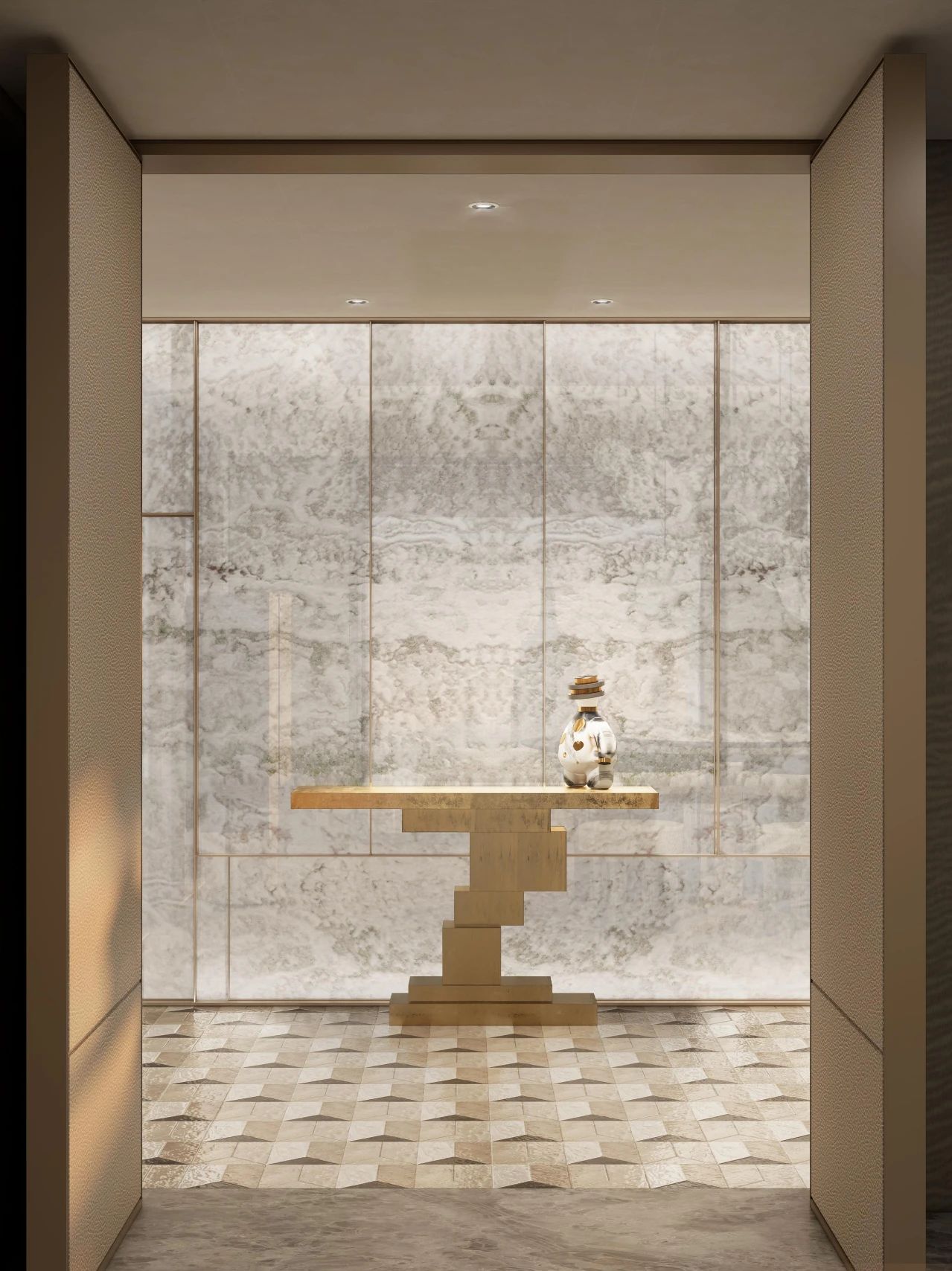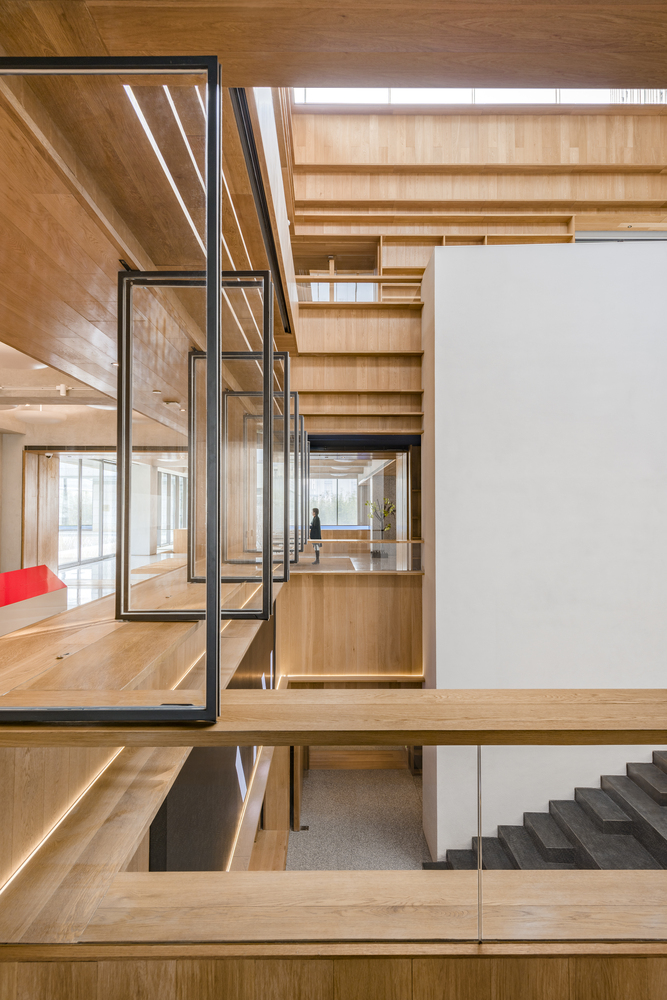Sub Urban Sub Version Box Urban
2011-05-28 00:00
架构师提供的文本描述。该建筑建于2009年至2010年,占地3670平方英尺,楼高3层,位于都柏林郊区一个低密度居民区的山腰侧。私人领域和公共领域之间的隔离决定了空间层次结构,这是建立建筑秩序的指导原则。该住宅已被屈尊,以促进感知和被动监视,并了解和回应其背景。这座建筑是研究空间的对角线关系,根据场地的几何和方面,以及它通过空间分层对公共领域的安全所作的贡献。真正的城市议程。
Text description provided by the architects. Constructed between 2009 and 2010.The building is a 3670 square foot 3 storey replacement dwelling set into the hill side in a low density suburban neighbourhood in Dublin. Segregation between the private and the public realms inform the spatial hierarchy which is the guiding principal to establishing an order for the building. The house has been deigned to contribute to perceived and passive surveillance and is informed by and responds to its context. The building is an investigation of the diagonal relationship of spaces informed by the geometry and aspect of the site and its contribution, by layering of space, to security in the public realm. A truly urban agenda.
房子的形式来源于场地的几何和上下文。它被放置在一个由FITY六英尺高的石板设置在现有的地面水平以下。这形成了一楼装修和外表面的院子,一个一楼包厢从东到西,并坐在一个板块,这是一层屋顶设置在对角线关系。这个盒子被结构和两个允许光线穿透到计划深处的空隙所渗透。阁楼从外墙向后倾斜,以反映周围建筑物的立面处理,所有这些都是现代成语中的一种。底层围护从建筑线延伸到后面和前面,在建筑物的南街一侧,在一片未被充分利用的郊区地面上创建一个私人安全域。增加被动监视的方法是在街道和这一被屏蔽的私人领域之间增加另一个空间,以便从外面窥见室内和私人外部空间;这向陌生人表明有可能被监视,同时允许从室内向居住者提供足够的视野,以给他们安全感。
The form of the house is derived from the site geometry and context. It is placed on a seventy by fity six foot stone plate set below existing ground level. This forms the ground floor finish and external surface to the court yards , A first floor box spans from east to west and sits over a plate which is the ground floor roof set in a diagonal relationship. The box is permeated by structure and two voids which allow light penetrate deep into the plan. The attic is set back from the façade to reflect the elevation treatment of neighboring buildings, all be it in a modern idiom. The ground floor enclosure extends beyond the building lines to the rear and to the front to create a private secure domain on the southern street side of the building on an otherwise under-utilized piece of suburban ground. Passive surveillance is increased by introducing another space between the street and this private domain screened so as to give glimpses of the interior and private external spaces from without; this indicates to the stranger that there is a possibility of being watched while allowing sufficient view to the occupant from the interior to give a sense of security.
从街道进入,是通过一个坚硬的园林庭院和台阶的有盖的空间,这是围绕在两边的木材屏风,并提供一个屋顶空隙。木材镶板部分打开,允许进入一个三层的空隙,形成一个大厅,使所有层次的空间之间的物理连接。从那里,一个人通过订购墙,这是从前面到后面的建筑物提供铰链屏幕,以允许进入存储和实用元件。底层的内部布置被确定为完全开放的空间,可以通过滑动屏幕调整成三个独立的空间,使房子能够按照占用的要求运作。滑动屏幕存储在一个中央核心元素,其中包含垂直服务路线和火灾场所。这个单元排列相邻的空间,从地面到屋顶水平,并被一个3层的包含楼梯的轻空所包围。
Approach from the street is by way of a hard landscaped court and down steps to a covered space which is enclosed on two sides by timber screens and provided with a roof void. The timber paneling partially opens to allow access to a three storey void forming a lobby which makes a physical connection between spaces at all levels. From there one passes through the ordering wall which runs from the front to the back of the building provided with hinged screens to allow access to storage and utility elements. The internal arrangement of the ground floor is identified as complete open space which can be adapted by sliding screens to make three separate spaces allowing the house to function as required by the occupancy. The sliding screens are stored in a central core element which contains vertical routes for services and a fire place. This element orders the adjoining spaces, runs from ground to roof level and is bounded by a 3 storey light void containing stairs.
大楼一楼被分隔成单独的牢房,为都柏林湾提供了宁静的北方光线和景观,同时也为该建筑展示了更正式的正面。屏幕的开启和关闭再次提供了可供选择的隔离级别。这与第二层楼的情况相结合,将允许从外部直接进入的独立公寓。
The first floor of the building is segregated into separate cells giving tranquil Northern light and views to Dublin Bay while presenting a more formal front to the building. The opening and closing of screens again provides alternative levels of segregation. This coupled with the second stair case would allow a separate apartment with direct access from the exterior.
二楼再次开放,使它能够作为一个主套房,或独立的公寓。滑动屏被隐藏在存储元件中,战略性地放置以告知空间布局,。随着屏幕在开放的位置,这一水平有一个直接的空间链接跨越楼梯的空隙,允许视图的所有层次的建筑物。在建筑物的前部和后部设有屋顶露台。
The second floor opens up again to enable it function as a master suite, or separate apartment. Sliding screens are concealed in storage elements strategically placed to inform the spatial arrangement,. With screens in the open position this level has a direct spatial link across the stair void allowing views to all levels of the building. Access is provided to a roof terrace at the front and rear of the building.
现浇混凝土构成楼板和围护构件,包括钢筋结构柱和梁。这是外部包裹一个专有的绝缘和渲染系统。进一步的外壳是由高性能的热和太阳反射玻璃在铝框架开放和关闭,以使内部和外部空间之间的直接连接。屋顶是刚玉。内部空间和入口区域由细木工的布置来定义。所有空间都有地板加热,屋顶水平的太阳能集热器提供热水。热交换系统用于向室内提供新鲜空气。
In situ concrete forms the floors and enclosing elements which contain reinforced structural columns and beams. This is wrapped externally with a proprietary insulation and rendering system. Further enclosure is provided by high performance thermal and solar reflecting glazing in aluminium frames with open and close to make a direct connection between the internal and external spaces. Roofs are sedum. Internal spaces and the entrance area are defined by the placement of joinery. All spaces are provided with under floor heating, Solar collectors at roof level provide hot water. A heat exchange system is used to provide fresh air to the interior.
客户向建筑师们提供了一份简短的报告,以便为一个越来越多的家庭提供宽敞的住所。设计简报旨在颠覆现有的典型郊区空间条件,提供一座建筑质量符合其背景的建筑,并为未来的需要提供灵活的住宿。设计意图是适应终身设计中的最佳做法,以具有强大的空间层次结构的弹性建筑形式促进物质、经济和社会可持续性。
The client approached the architects with a brief to provide spacious accommodation for a growing family.The design brief was to subvert the existing typically suburban spatial condition, to provide for a building of architectural quality informed by its context and provide flexible accommodation for future needs. The design intent was to accommodate best practice in lifetime design to promote physical, economic and social sustainability in a resilient built form with a robust spatial hierarchy.
 举报
举报
别默默的看了,快登录帮我评论一下吧!:)
注册
登录
更多评论
相关文章
-

描边风设计中,最容易犯的8种问题分析
2018年走过了四分之一,LOGO设计趋势也清晰了LOGO设计
-

描边风设计中,最容易犯的8种问题分析
2018年走过了四分之一,LOGO设计趋势也清晰了LOGO设计
-

描边风设计中,最容易犯的8种问题分析
2018年走过了四分之一,LOGO设计趋势也清晰了LOGO设计




































































































